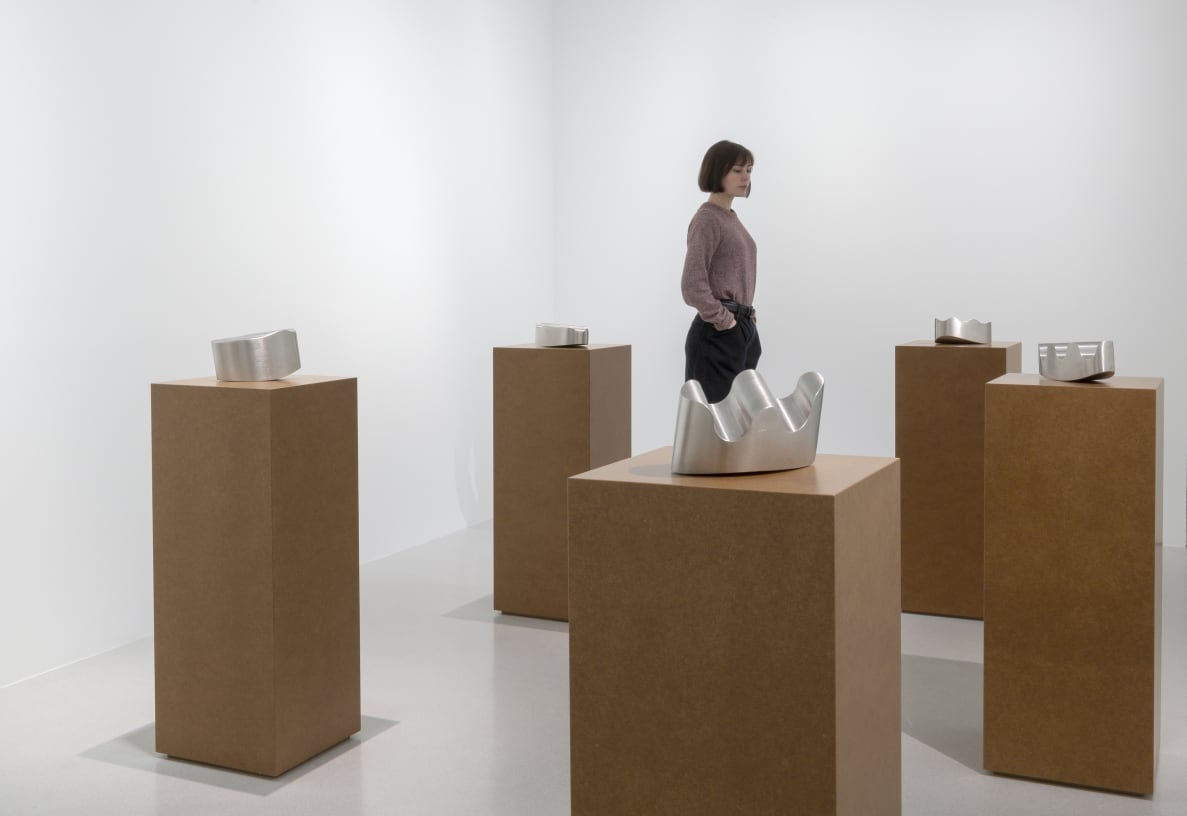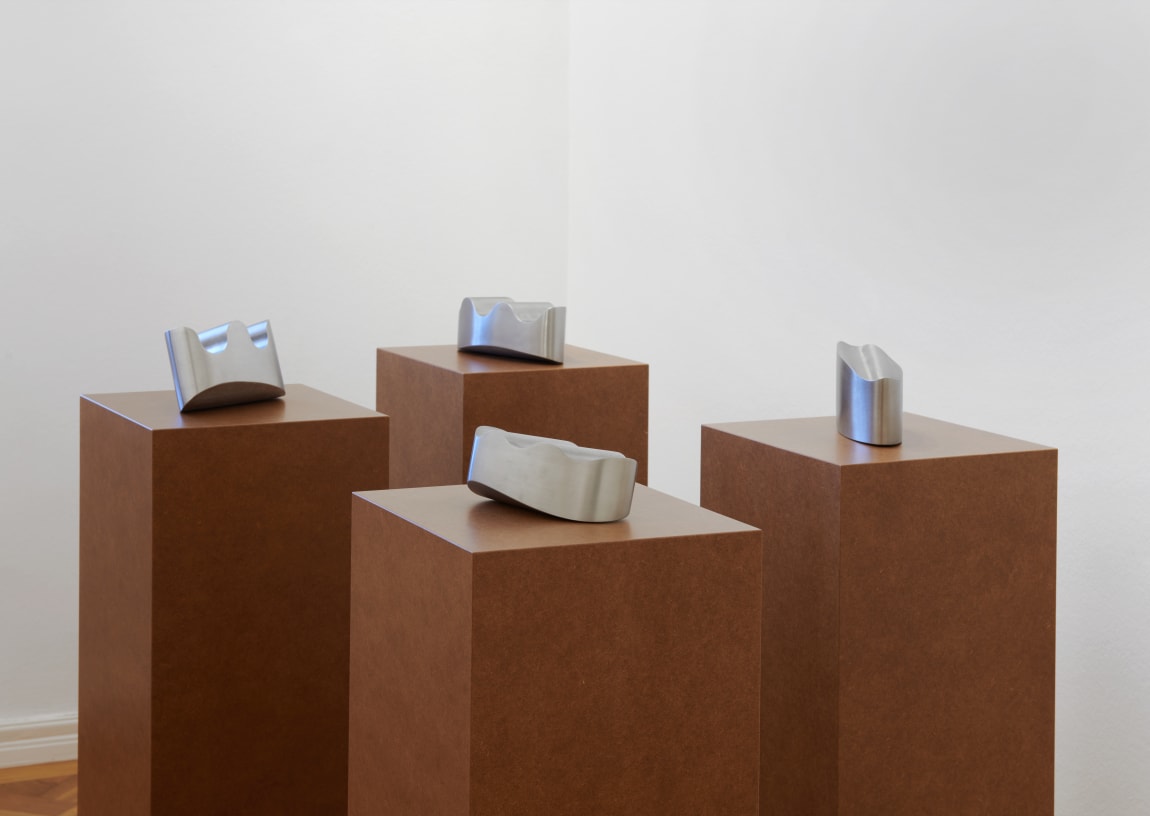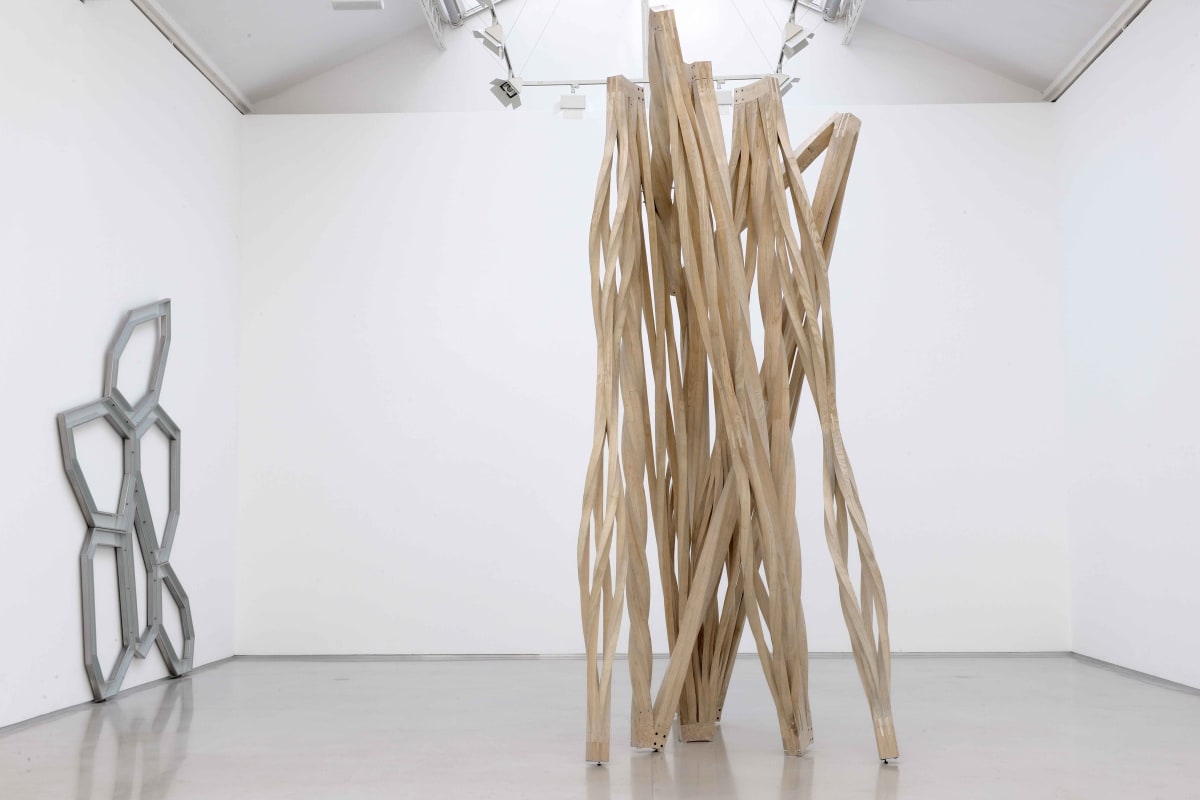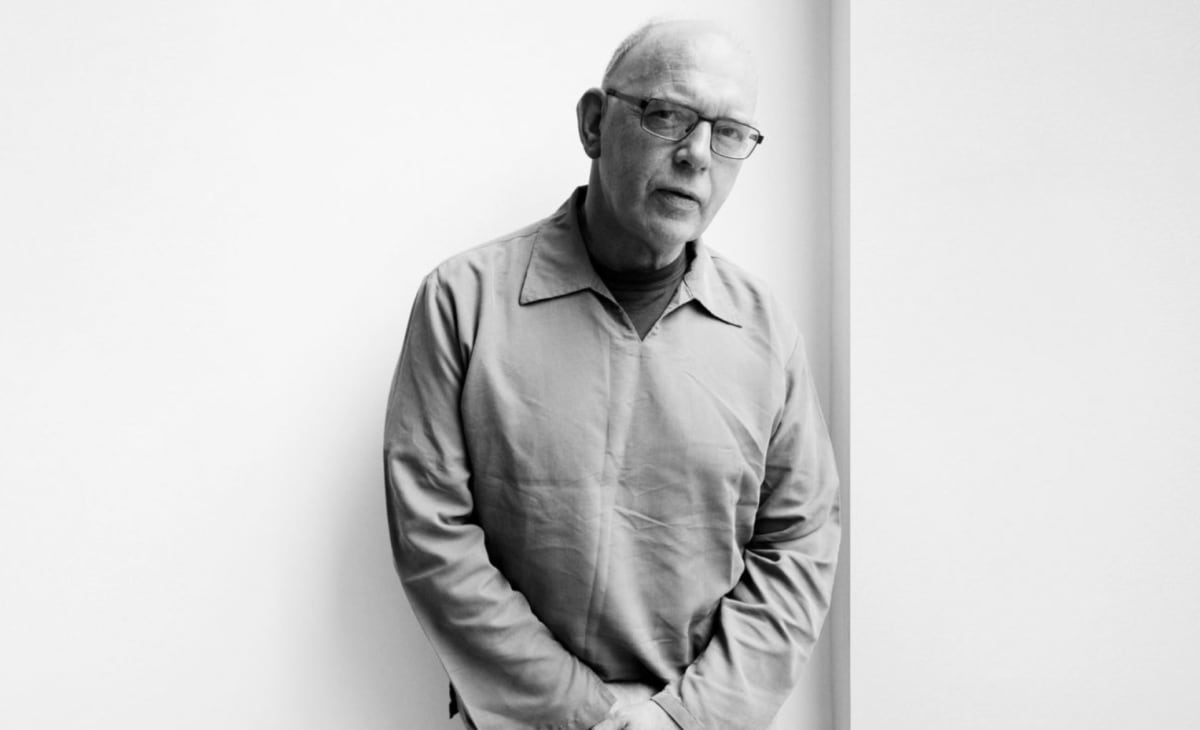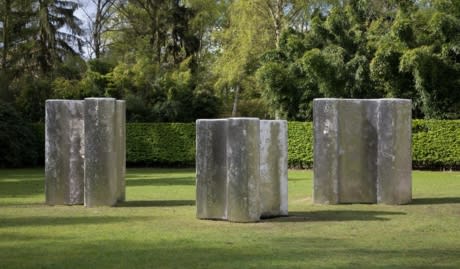

Richard Deacon
Overview
'My thoughts always do return to some relationship between what the ramifications are in terms of an inside and outside in a sculptural form.'
Richard Deacon's sculptures are characterised by a controlled, abstract structure that is combined with an imaginative and unexpected use of materials. At the forefront of British sculpture since the 1980s, he has developed a distinctive vocabulary that includes everyday materials such as laminated wood, linoleum, leather, concrete and limestone. There is a striking tension between the resolute abstraction of his works and the organic implications of their shapes, which often evoke forms from molecular biology. Whether executed on a domestic or monumental scale, his sculptures explore the interactions between surface and space, interior and exterior, mass and lightness, motion and calm.
In contrast to the specificity of Deacon's approach to material and substance, there is an ambiguity central to his works: 'The form is clear but there's also a desire for a potential plasticity or fluidity which remains latent. In a sense I have been trying to attach sculpture to perception or to experience rather than attaching it to the world.' Transformation is a constant motif, as a way of visualising the insubstantial and shifting forces – including 'clouds, swirls of water, shapes in the fire, vomit, pebbles, smoke' – that shape our perception of the physical world. The artist describes himself as a 'fabricator' and traces of the material's treatment often remain visible, such as glue seeping from between layers of wood, highlighting the construction processes behind the finished sculptures.
Richard Deacon's sculptures are characterised by a controlled, abstract structure that is combined with an imaginative and unexpected use of materials. At the forefront of British sculpture since the 1980s, he has developed a distinctive vocabulary that includes everyday materials such as laminated wood, linoleum, leather, concrete and limestone. There is a striking tension between the resolute abstraction of his works and the organic implications of their shapes, which often evoke forms from molecular biology. Whether executed on a domestic or monumental scale, his sculptures explore the interactions between surface and space, interior and exterior, mass and lightness, motion and calm.
In contrast to the specificity of Deacon's approach to material and substance, there is an ambiguity central to his works: 'The form is clear but there's also a desire for a potential plasticity or fluidity which remains latent. In a sense I have been trying to attach sculpture to perception or to experience rather than attaching it to the world.' Transformation is a constant motif, as a way of visualising the insubstantial and shifting forces – including 'clouds, swirls of water, shapes in the fire, vomit, pebbles, smoke' – that shape our perception of the physical world. The artist describes himself as a 'fabricator' and traces of the material's treatment often remain visible, such as glue seeping from between layers of wood, highlighting the construction processes behind the finished sculptures.
Born in 1949 in Bangor, Wales, Deacon lives and works in London. He studied at the Somerset College of Art in Taunton, followed by the St Martin's School of Art and the Royal College of Art in London, graduating in 1977. His first solo exhibition was held the following year at The Gallery in Brixton, London. This was followed by shows at the Riverside Studios (1984), Tate Gallery (1985) and Whitechapel Art Gallery in London (1998) and at Tate Gallery in Liverpool (1999). His work has been exhibited at the Centre Pompidou, Paris (2003); Ikon Gallery, Birmingham (2007); Musee d'Art Moderne et Contemporain, Strasbourg and Sprengel Museum, Hanover (2010); CAC Málaga (2012); and Tate Britain, London (2014). Between 2015–16, a major retrospective was shown at the Kunstmuseum Winterthur, Switzerland; Heydar Aliyev Center, Baku, Azerbaijan; and Langen Foundation, Neuss, Germany. The first comprehensive survey of his drawings was shown at the Museum Folkwang, Essen, Germany in 2016, followed by his first major museum survey in the USA at the San Diego Museum of Art in 2017. His teaching activities include professorships at the Chelsea School of Art, the London Institute and the École nationale supérieure des beaux-arts, Paris. Among other honours, he was awarded the Turner Prize in 1987, made a Chevalier des Arts et des Lettres by France in 1997, and became a Commander of the Order of the British Empire in 1999.
Videos



Artworks
Expositions
Catalogues















